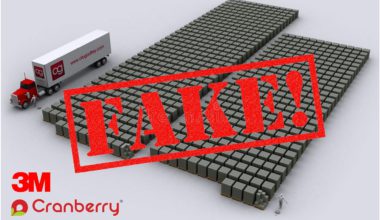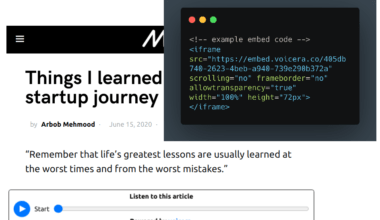What are contact tracing apps? It’s an app that detects the COVID infected patients in your proximity and let you know if you have ever crossed paths with them. It works on Bluetooth LE (Low Energy) + GPS (not needed though) and detects the proximity of the nearby COVID-19 infected people using that tech.
As countries search for ways to exit lockdown and avoid or manage a second wave of COVID-19 cases, many have turned to the promise held by contact-tracing apps. In a rare display of collaboration, Apple and Google recently joined forces to help the technology work effectively.
Such apps look attractive to countries looking to lift restrictions, but there is growing evidence that it will be difficult to make them work. Let’s not talk about privacy issues here. Because, if there were any conclusive evidence that an app can stop the spread of COVID-19 but with sacrificing the privacy of people. I don’t think many people will give a second thought of not using the app. Because, Lives >>> Privacy. Without Lives, what are you going to do with Privacy?
Now, let’s come to the topic at hand. Why contact tracing apps are a bad idea?
Problem #1 – False Positives
Any app will have a precise definition of a contact: let’s say it’s less than six feet for more than five minutes. The false-positive rate is the percentage of contacts that don’t result in transmissions. This will be because of several reasons. One, the app’s location and proximity systems — based on GPS and Bluetooth — just aren’t accurate enough to capture every contact. Two, the app won’t be aware of any edge-cases circumstances, like walls or partitions or herd immunity. And three, not every contact results in transmission; the disease has some transmission rate that’s less than 100% (and I don’t know what that is).
Assume you take the app out grocery shopping with you and it alerts you of a contact. What should you do? It’s not accurate enough for you to quarantine yourself for two weeks without proper testing and health framework.
Problem #2 – False Negatives
This is the rate the app fails to register a contact when an infection occurs. This also will be because of several reasons. One, errors in the app’s location and proximity systems. Two, transmissions that occur from people who don’t have the app (even Singapore didn’t get above a 20% adoption rate for the app). And three, not every transmission is a result of that precisely defined contact — the virus sometimes travels further.
Assume you take the app out grocery shopping and it doesn’t alert you of any contact. Are you in the clear? No, you’re not. You actually have no idea if you’ve been infected. Because some weirdo forgets to put his COVID symptoms to the app before he goes out to infect the world.
The end result is an app that doesn’t work. People will post their bad experiences on social media, and people will read those posts and realize that the app is not to be trusted. That loss of trust is even worse than having no app at all.
Problem #3 and The biggest of them all – Adoption
You might have heard of the Chicken and Egg paradox. It basically suggests that the value proposition to two separate groups is dependent on penetration in the other. But, what does that mean? Let’s take an example. If we look at Aarogya Setu – India’s Official Contract tracing app (50M+ Downloads as of now). The premise of the idea sounds impactful but it’s useless without a sufficient network effect, that too a big one, say 400M+ people in India using it, at least. The app will only work if almost every person in a country has that app installed on their smartphone.
A simulation of a city of 1 million people by researchers at the University of Oxford, published yesterday, found that more than 80 percent of smartphone users in the UK would need to install a contact-tracing app in order for it to be effective in suppressing an epidemic: that is 56 percent of the national population. The UK’s chief scientific adviser, Patrick Vallance, has indicated that he thinks such apps might have a role to play in contact tracing but that it would be a tall order to get 80 percent of smartphone owners in the UK to use them.
The Indian smartphone users ~500M, population 1.3B, so that leaves the maximum penetration to maximum COVID-19 affected people ratio to an incredibly terrible position. Suppose, if you got contacted with a COVID patient with the app not installed then you’re screwed.
Aarogya Setu (or any contact tracing app) isn’t a physical-distancing app. It’s a location-based COVID detection app. It doesn’t encourage physical-distancing. It does the opposite. To be honest, at a larger scale its a terrible initiative from govt to put people in a facade that “If you have ‘Aarogya Setu’ app, you won’t get affected by COVID” and that put the people at an incredibly high risk of being affected. People should better have stayed at their home than putting their belief on an app that doesn’t work. The government usually focuses on impact without considering the global efficacy factor.
The idea that contact tracing can be done with an app, and not human health professionals, is just plain dumb. And without large scale, cheap, fast, and accurate testing, you can’t confirm the app’s diagnosis. So the alert is useless. It has nothing to do with privacy concerns.
SO, it’s much better for you to Stay Home, engage in physical-distancing, and help stop the spread of COVID-19. Because, until we get a vaccine, that too manufacturing at a global scale, physical-distancing is the only way to prevent the spread of COVID-19.
This post is based on the personal opinion of the author and not to be considered as health advice. You must consult an experienced medical practitioner before agreeing to anything said above.
References: University of Oxford, Ministry of Health and Family Welfare, Government of India, BlackBox Security, World Health Organization, New Scientist Report.

